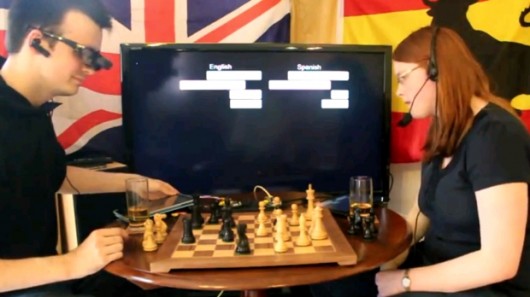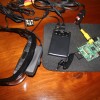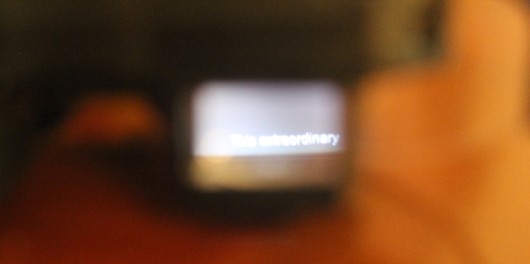Augmented reality glasses perform real-time language translation
03:59 July 29, 2012

British computer programmer Will Powell has created a prototype real-time translation system that displays subtitles for the interlocutor's speech in a language of choice (Image: Will Powell)
Inspired by the Google's Project Glass, computer programmer Will Powell has built a prototype real-time translation system that listens to speech, translates it into one of 37 languages, and then displays the resulting text as subtitles directly onto the user's glasses.
In a nutshell, here's how it all works. A Bluetooth microphone picks up the audio signal and connects to a smartphone or tablet to provide a clean, noise-cancelled audio feed. The signal is then sent to the Microsoft Translator service, which detects the foreign language and transcribes it into the target language of choice. Finally, the translated text is displayed on the lower half of the glasses – effectively providing real-time subtitles for a conversation in a foreign language.
The subtitle interface and the pictured TV display (a non-essential component used in a demo to display the text of the entire conversation) is powered by two Raspberry Pi units - credit card sized, single-board computers that retail for US$35 each.
The Vuzix Star 1200 augmented reality glasses are showing the translated text as subtitles (Image: Will Powell)
The resulting system appears quite responsive, although it may still be a little too slow for real-life applications. Most of the delay in the subtitles is caused by the server time needed to process the information and, says Powell, caching the most common expressions has somewhat mitigated the problem, but not solved it.
Nifty? Yes. Practical and accessible? Not quite. The augmented reality Vuzix Star 1200 glasses that Powell used for this project – which are completely transparent, like a pilot's head-up display – retail for US$4,999. Moreover, the quality of the translation might be heavily affected without the interlocutor wearing a headset (or a second pair of glasses) to improve audio quality.
The video below is a short demonstration of the concept. The subtitles mirror the text appearing on the user's glasses.
Source: Will Powell




